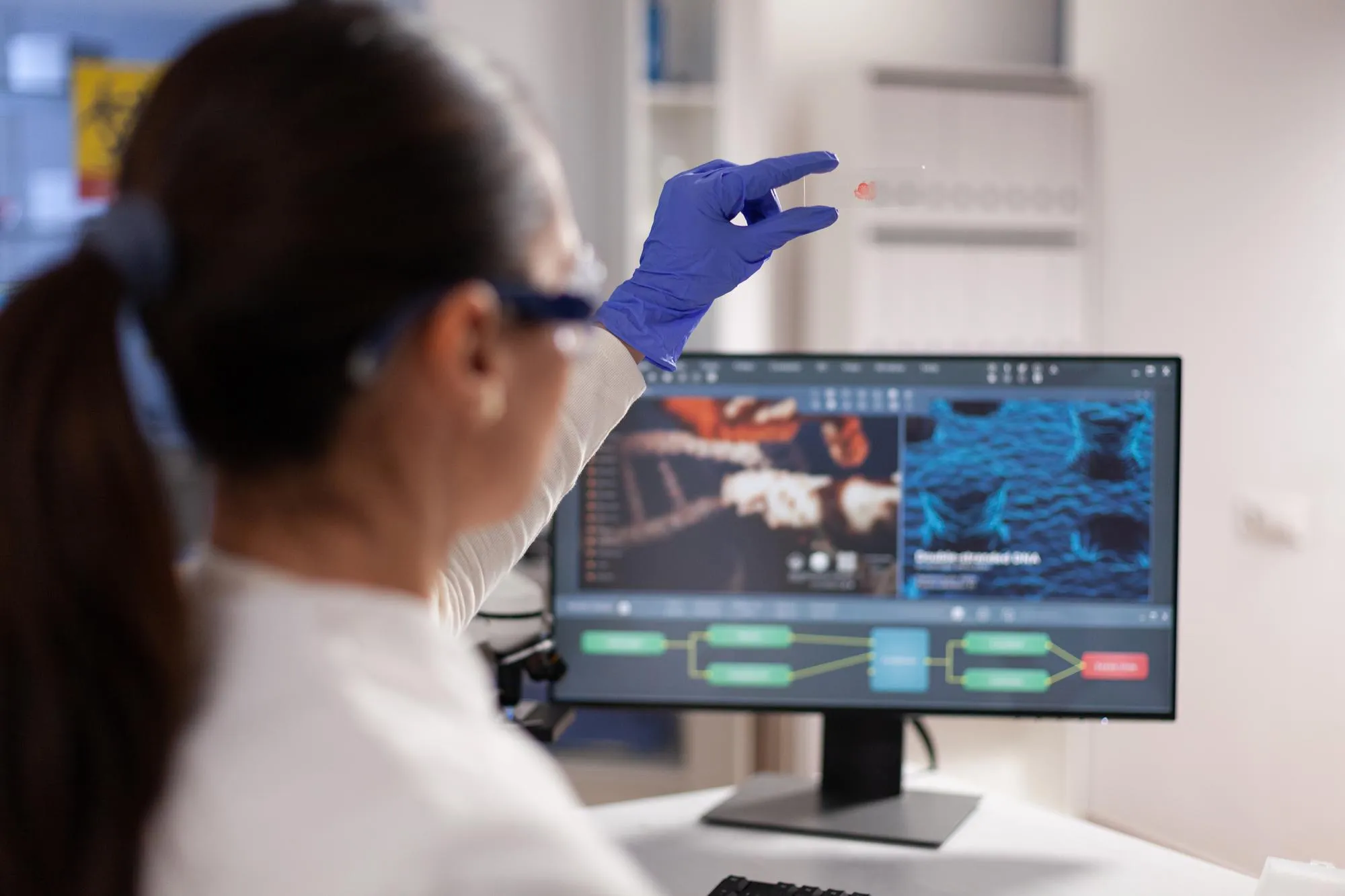Keywords
1. Staphylococcus aureus biofilm
2. Anti-biofilm therapeutics
3. Biofilm proteome research
4. Antibiotic-resistant infections
5. Biofilm-associated infections treatment
The relentless war against bacterial infections has encountered one of its toughest challenges yet as Staphylococcus aureus, a notorious pathogen known for causing life-threatening infections, has steadily advanced its defenses. One of its most formidable strategies includes the formation of biofilms—a form of “bacterial fortress” that allows it to resist antibiotics and escape the immune system’s wrath. In a groundbreaking study, published in the latest edition of Advances in Protein Chemistry and Structural Biology, researchers have compiled an exhaustive analysis of the biofilm proteome of Staphylococcus aureus, unveiling significant implications for therapeutic interventions to biofilm-associated infections [1].
The DOI for this research is 10.1016/bs.apcsb.2023.08.002, and the article reference number is S1876-1623(23)00079-2.
Biofilm: A Bacterial Shield Against Modern Medicine
Biofilms are structured colonies of bacteria ensconced within a self-produced matrix of proteins, polysaccharides, and nucleic acids. This shield notably enhances the tolerance of bacterial communities to antibiotics and poses a formidable barrier to host immune defenses—making the treatment of biofilm-associated infections grueling. Within the realm of healthcare settings, S. aureus biofilms are particularly associated with device-related infections, contributing to significant morbidity and mortality rates.
The Call for an Anti-Biofilm Revolution
The pressing need for effective anti-biofilm therapeutics in the clinical domain has catalyzed research into understanding the intricate framework of biofilms. Anti-biofilm strategies have incorporated bactericidal agents, antimicrobial peptides, bacteriophages, and nano-conjugated materials, yet the search for truly efficacious and clinically practical solutions continues.
Key to this quest is the comprehensive decoding of the molecular biology underpinning biofilm development. Proteins, as key players in the biofilm formation process, present an avalanche of potential drug targets. By unraveling the biofilm proteome—essentially the entire set of proteins active within a biofilm—scientists could pave the way for rational drug discovery devoted to conquering these bacterial strongholds.
Staphylococcus aureus: The Biofilm Proteome
The biofilms of S. aureus can manifest in two primary forms—PIA-dependent and PIA-independent, differentiated by the presence or absence of polysaccharide intercellular adhesin (PIA). This distinction plays a pivotal role in dictating the success of specific therapeutic interventions.
Quorum sensing, a type of bacterial communication, along with interconnected signaling pathways and regulatory molecules, are integral to the expression of biofilm-specific proteins. Some of these proteins enable bacteria to adhere to surfaces, others contribute to the structural integrity of the biofilm, and some protect against antibiotics or help in evading the host immune system.
The research underscores the importance of biofilm-specific proteins in S. aureus, which are upregulated during various stages of biofilm maturation. Identification of these proteins provides a blueprint for targeted drug design and therapeutic interventions tailored to disrupt biofilm formation or dismantle established biofilms, offering a gleam of hope in mitigating the biofilm-associated infections crisis.
The Road to Anti-Biofilm Agents
Current research pivots on anti-biofilm therapeutics directed against the biofilm proteome. These include novel strategies such as the design of inhibitors that act on key regulatory systems like the accessory gene regulator (agr) system, responsible for quorum sensing, and the utilization of enzymes that degrade the biofilm matrix.
Further focusing on anti-biofilm peptides, which can penetrate and disrupt biofilms, presents another promising avenue. These peptides can be engineered to target specific proteins within the biofilm, effectively destabilizing the biofilm structure.
Advancements in nanotechnology also offer exciting new horizons, where nanoparticles armed with anti-biofilm payloads can navigate the dense matrix of the biofilm, delivering their therapeutic cargo directly to the heart of the bacterial community.
A Collaborative Future
With insights into the biofilm proteome, interdisciplinary efforts can converge to foster the development of novel therapeutics. Collaborations between microbiologists, biochemists, pharmacologists, and biomedical engineers harness the full potential of these discoveries, enabling a more strategic offensive against biofilm-related infections.
Immediate and Long-term Impact
The immediate implications of delineating the biofilm proteome of Staphylococcus aureus are profound. With targeted drugs against biofilm-associated proteins, clinicians can expect improved outcomes in treating device-associated and systemic infections, effectively reducing the burden on the healthcare system.
The long-term impact transcends S. aureus, extending insights into other biofilm-forming bacteria. It lights up a pathway that may ultimately lead to a future where antibiotic resistance can be circumvented, and the looming threat of untreatable bacterial infections is once again brought under control.
Conclusion
The research conducted by Francis Dileep and colleagues presents a paradigm shift in our approach to tackling one of the most pressing healthcare issues of our time. By decoding the biofilm proteome of Staphylococcus aureus, we stand on the cusp of a revolution in anti-biofilm therapeutics—one that brings an arsenal of precision weapons to the front lines of our battle against biofilm-associated infections.
The implications of this research extend far beyond academia, likely influencing future drug development strategies and clinical practices globally. As S. aureus continues to outpace current therapeutic measures, the findings articulated within this study represent a critical piece of the puzzle in combating biofilm-centric pathogenicity.
References
1. Dileep, F., Hari Gopika, V., Subash Abhijith, K., Anusha, B., & Atheene, J. (2024). The biofilm proteome of Staphylococcus aureus and its implications for therapeutic interventions to biofilm-associated infections. Advances in Protein Chemistry and Structural Biology, 138, 327-400. doi: 10.1016/bs.apcsb.2023.08.002
2. Otto, M. (2008). Staphylococcal biofilms. Current topics in microbiology and immunology, 322, 207-228. doi: 10.1007/978-3-540-75418-3_10
3. Vuong, C., & Otto, M. (2002). Staphylococcus epidermidis infections. Microbes and infection, 4(4), 481-489. doi: 10.1016/S1286-4579(02)01563-0
4. Haag, A. F., & Bagnoli, F. (Eds.). (2017). Staphylococcus aureus: Microbiology, Pathology, Immunology, Therapy and Prophylaxis. Springer International Publishing. doi: 10.1007/82_2017_27
5. Stewart, P. S., & Costerton, J. W. (2001). Antibiotic resistance of bacteria in biofilms. The Lancet, 358(9276), 135-138. doi: 10.1016/S0140-6736(01)05321-1
